The 42nd Foundation Day Lecture was delivered by *Shri Satya S Tripathi, the Secretary General of Global Alliance for a Sustainable Planet (GASP). Reflecting on his own journey, Shri Tripathi emphasised the importance of being driven by values rather than wealth or privilege. He expressed gratitude for the opportunities to represent his culture and community on the global stage, challenging the notion of labels while recognising the significance of his achievements as an Odia.
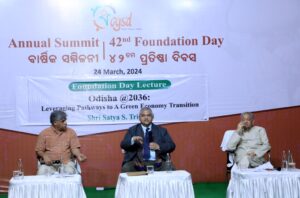 His remarks resonated with humility and a profound sense of responsibility as he prepared to address the audience. With a focus on preparing Odisha for the challenges of 2036, he emphasised the need for collective action and innovative solutions to address the looming climate crisis.
His remarks resonated with humility and a profound sense of responsibility as he prepared to address the audience. With a focus on preparing Odisha for the challenges of 2036, he emphasised the need for collective action and innovative solutions to address the looming climate crisis.
In his address, he emphasised the historical significance of Odia culture, dating back to the Kalinga War in 262 BCE, where Kalinga remained unconquered. He highlighted the transformative power of the land, citing Emperor Ashoka’s change of heart following the war. The speaker urged the audience to recognise their roles as change-makers, guiding people towards positive transformations.
Shifting focus from problems to solutions, he addressed the global challenge of climate change, emphasising the interconnectedness of science, policy, and politics. He lamented the moral landscape of carbon emissions, where industrialised nations disproportionately contribute to global warming. He used the analogy of meal consumption to illustrate the disparity in carbon footprints between developed and developing countries, highlighting the unfair burden placed on nations like India.
He continued by highlighting the moral complexities surrounding climate action, particularly in the context of international negotiations and carbon emissions. He criticised the imbalance in responsibility between developed and developing nations, emphasising the unfair burden placed on countries like India. He illustrated this disparity using the analogy of a village with rich and poor households, where despite moral objections, practical necessity often requires cooperation with those in power.
Moving to the specifics of Odisha, he discussed the evolving carbon market and its potential impact on the state. He explained the concept of scope three emissions and how they will be factored into carbon pricing in the future. He cited examples of successful carbon reduction strategies, such as the Delhi Metro’s regenerative braking system, and highlighted the economic implications of carbon pricing for industries like natural farming in Odisha.
The lecture delved into the intricate details of carbon avoidance, mitigation, and sequestration, particularly in natural farming practices. He emphasised the importance of covering land throughout the year to retain moisture, thus reducing the need for irrigation and subsequent carbon emissions associated with electricity generation. He highlighted the potential benefits of transitioning to natural farming in Odisha, where vast cropland could sequester significant amounts of carbon annually, leading to improved prosperity for farmers.
Expanding his focus to the broader challenges faced by Odisha, he addressed the state’s carbon emissions and the implications of climate change on its coastal regions and agricultural productivity. He underscored the need for holistic solutions and emphasised the importance of community engagement in conservation efforts, citing successful projects in Indonesia as examples of collaborative, private-sector-led initiatives.
He concluded with a call to action, urging individuals to take responsibility for driving change and highlighting the potential for innovative solutions to address complex environmental issues. He emphasised the role of community-driven initiatives, such as the Master Farmer program, in promoting sustainable practices and empowering local farmers.
He emphasised the transformative impact of natural farming practices, particularly in improving public health and reducing the prevalence of diseases linked to chemical-based agriculture. He highlighted the success of bio-villages in Odisha and advocated for the recognition and financial compensation of women farmers for their contributions to carbon sequestration and societal well-being.
Addressing the need for behavioural and psychological changes, he stressed the urgency of acknowledging and addressing the accelerating degradation of the Earth’s ecosystem. He cited alarming trends such as the rapid melting of Arctic ice and the Himalayan cryosphere, emphasising the dire consequences for sea levels, water availability, and human civilization. He urged individuals to question consumption patterns and embrace sustainability, underscoring the importance of humility and collective action in safeguarding the planet for future generations.
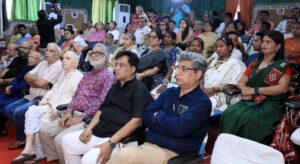 He underscored the urgency of halting destructive practices and embracing sustainable living to preserve Earth’s ecosystems. He recounted a meeting in the early 1980s where concerns about ecological degradation were raised, warning of dire consequences if natural resources were not managed responsibly.
He underscored the urgency of halting destructive practices and embracing sustainable living to preserve Earth’s ecosystems. He recounted a meeting in the early 1980s where concerns about ecological degradation were raised, warning of dire consequences if natural resources were not managed responsibly.
Addressing a query about pricing carbon in agricultural and coastal areas, he shared insights from a recent visit to Uttar Kanada district in Karnataka. There, efforts are underway to protect biodiverse wetlands by planting mangrove trees. Mangrove carbon, valued for its role in adaptation and carbon sequestration, offers multiple benefits in mitigating sea-level rise and minimising damage from natural disasters like tsunamis. He highlighted the potential for similar initiatives in Odisha, leveraging partnerships with global corporations to fund mangrove restoration projects.
Satya Tripathi’s Foundation Day lecture emphasised collective action and innovative solutions to combat climate change in Odisha. He highlighted the transformative impact of natural farming and urged recognition and compensation for women farmers. Tripathi underscored the urgency of addressing ecological degradation and advocated for sustainable living. His insights on pricing carbon and mangrove restoration projects offered practical pathways for environmental conservation.
————————————————————-
(*) The Speaker, Satya S Tripathy is a distinguished development economist, lawyer, and change-maker with over four decades of experience. With a rich international background, including key roles at the UN as former Assistant Secretary General and Head of Environment Management Group, he brings valuable insights to the table. He has been instrumental in various initiatives, from post-war human rights investigations to facilitating climate finance partnerships. Despite encountering numerous change-makers worldwide, he stands out for his unwavering passion and dedication, especially in amplifying the voices of the marginalised. Currently, he is the Chancellor of KISS University, Odisha.
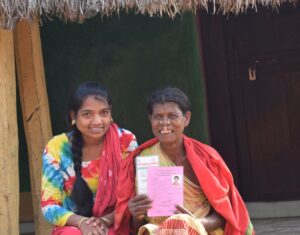 Driven by a desire to uplift her fellow villagers, Lachama embarked on a mission to navigate the complexities of government schemes, particularly for the most vulnerable members of society. As the first graduate from Tendulipadar, she felt a deep responsibility to ensure that her people were not deprived of the assistance they were entitled to.
Driven by a desire to uplift her fellow villagers, Lachama embarked on a mission to navigate the complexities of government schemes, particularly for the most vulnerable members of society. As the first graduate from Tendulipadar, she felt a deep responsibility to ensure that her people were not deprived of the assistance they were entitled to.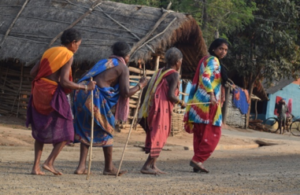 Lachama’s impact extends beyond paperwork; it’s about restoring dignity and ensuring no one is left behind. She recounts the plight of widows like Sashi Panasputia, Moti Panasputia, and Rama Mathapadia, who were denied pensions for years due to their lack of awareness about government schemes. Through Lachama’s intervention, these deserving individuals finally received the benefits they were entitled to, bringing tangible relief and empowerment to the community.
Lachama’s impact extends beyond paperwork; it’s about restoring dignity and ensuring no one is left behind. She recounts the plight of widows like Sashi Panasputia, Moti Panasputia, and Rama Mathapadia, who were denied pensions for years due to their lack of awareness about government schemes. Through Lachama’s intervention, these deserving individuals finally received the benefits they were entitled to, bringing tangible relief and empowerment to the community.
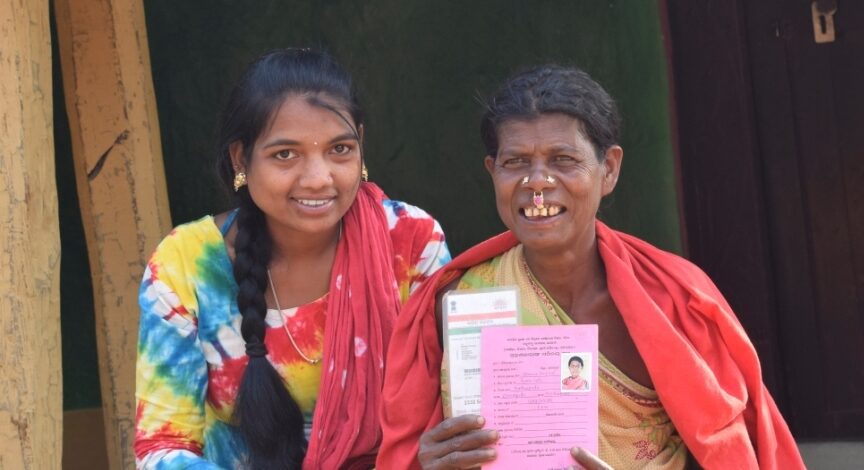
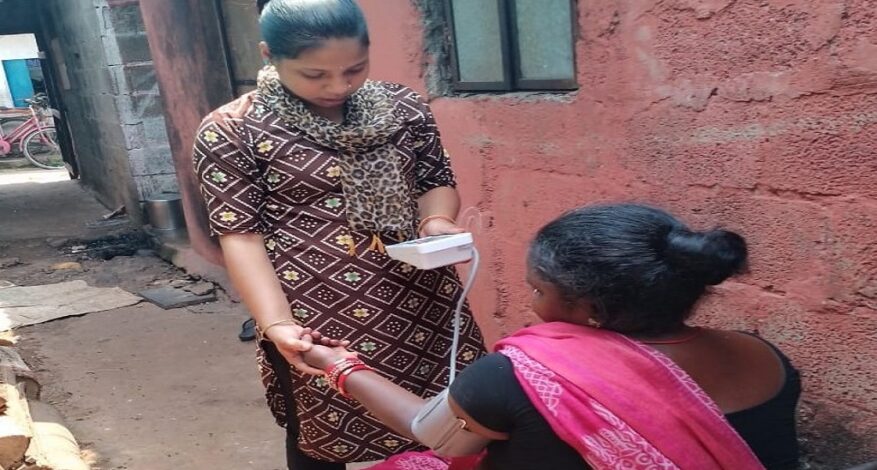
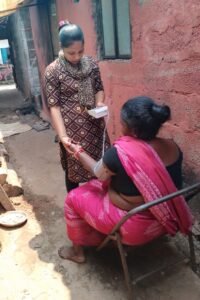 Initially reserved, Monalisa found her confidence when she was introduced as a Paramedic at a community gathering, organised by the Urban Health Project team of CYSD. This moment of self-discovery allowed her to tap into her inner strength and value. She began actively engaging with her community, visiting homes to encourage health monitoring and guide individuals to seek medical assistance when necessary. Her efforts not only boosted her own confidence but also fostered a culture of health consciousness within the community.
Initially reserved, Monalisa found her confidence when she was introduced as a Paramedic at a community gathering, organised by the Urban Health Project team of CYSD. This moment of self-discovery allowed her to tap into her inner strength and value. She began actively engaging with her community, visiting homes to encourage health monitoring and guide individuals to seek medical assistance when necessary. Her efforts not only boosted her own confidence but also fostered a culture of health consciousness within the community.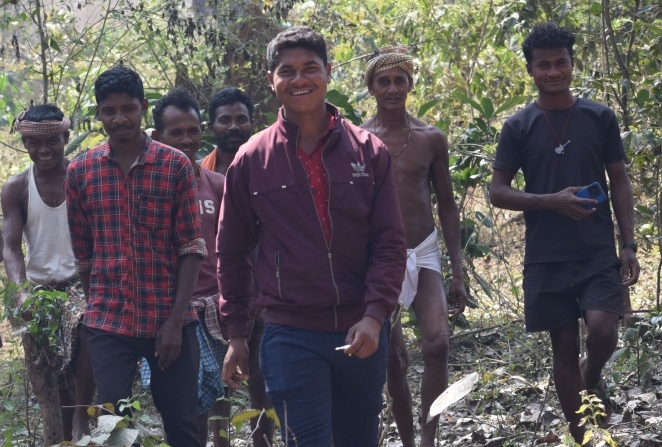
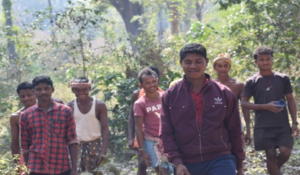 Their journey was not without challenges. Convincing apprehensive villagers to confront the timber mafia required patience and perseverance. Yet, Luku’s unwavering commitment and vision for a sustainable future resonated with his community. Together, they imposed stringent penalties for unauthorised tree felling and collaborated with local authorities to push back against encroachment.
Their journey was not without challenges. Convincing apprehensive villagers to confront the timber mafia required patience and perseverance. Yet, Luku’s unwavering commitment and vision for a sustainable future resonated with his community. Together, they imposed stringent penalties for unauthorised tree felling and collaborated with local authorities to push back against encroachment.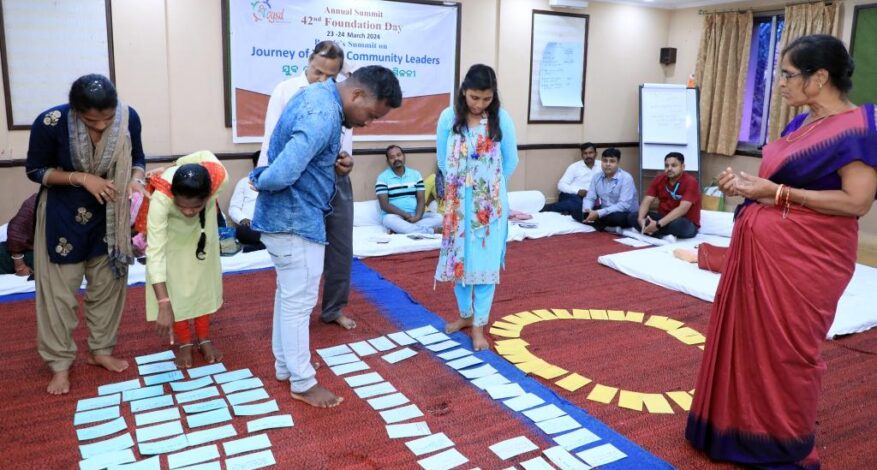
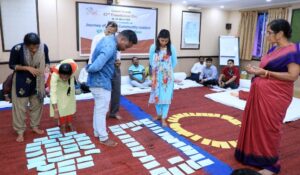 During the CYSD Annual Summit-2024, a “Young Community Leadership Camp” was organized for 35 select young leaders from seven tribal operational districts of Odisha. The camp aimed to analyse successful strategies, identify developmental needs, and refine the community leadership program based on feedback from these leaders.
During the CYSD Annual Summit-2024, a “Young Community Leadership Camp” was organized for 35 select young leaders from seven tribal operational districts of Odisha. The camp aimed to analyse successful strategies, identify developmental needs, and refine the community leadership program based on feedback from these leaders.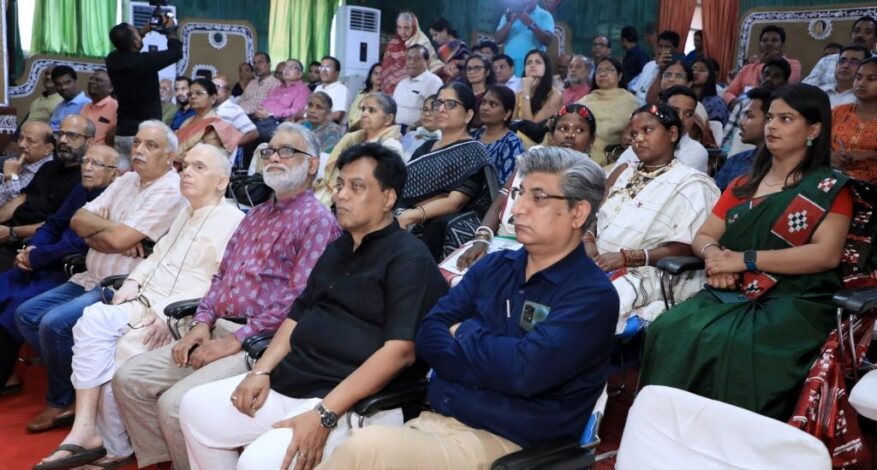
 His remarks resonated with humility and a profound sense of responsibility as he prepared to address the audience. With a focus on preparing Odisha for the challenges of 2036, he emphasised the need for collective action and innovative solutions to address the looming climate crisis.
His remarks resonated with humility and a profound sense of responsibility as he prepared to address the audience. With a focus on preparing Odisha for the challenges of 2036, he emphasised the need for collective action and innovative solutions to address the looming climate crisis. He underscored the urgency of halting destructive practices and embracing sustainable living to preserve Earth’s ecosystems. He recounted a meeting in the early 1980s where concerns about ecological degradation were raised, warning of dire consequences if natural resources were not managed responsibly.
He underscored the urgency of halting destructive practices and embracing sustainable living to preserve Earth’s ecosystems. He recounted a meeting in the early 1980s where concerns about ecological degradation were raised, warning of dire consequences if natural resources were not managed responsibly.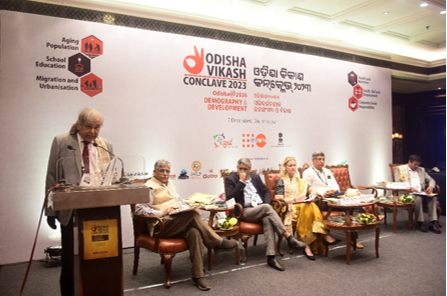
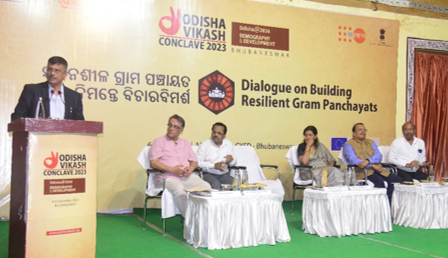
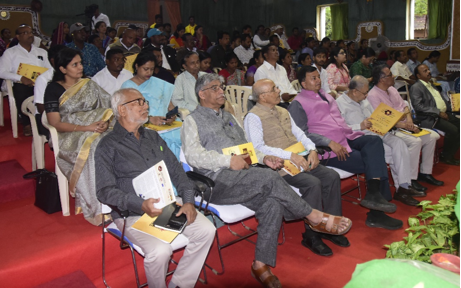 He underlined the need for an inclusive approach in the Panchayati Raj Institutions (PRIs) system to ensure that the last-mile individuals are covered under social security.Emphasising on the need to check distressed migration to ensure rural prosperity, Shri Anshuman Karol, Lead Governance and Climate Action, Society for Participatory Research in Asia (PRIA), stated that Panchayats play a pivotal role in planning and structuring employment in villages to reduce migration.
He underlined the need for an inclusive approach in the Panchayati Raj Institutions (PRIs) system to ensure that the last-mile individuals are covered under social security.Emphasising on the need to check distressed migration to ensure rural prosperity, Shri Anshuman Karol, Lead Governance and Climate Action, Society for Participatory Research in Asia (PRIA), stated that Panchayats play a pivotal role in planning and structuring employment in villages to reduce migration.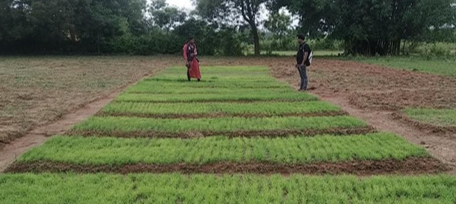
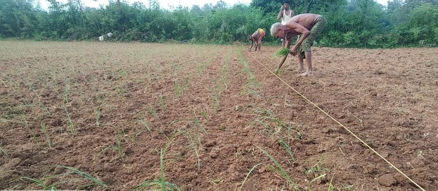 By adopting millet cultivation, Janardhan improved his agricultural yield and ensured a more stable income source. Ragi millets being known for their resilience and lower water requirements, make them ideal for this region. Janardhan also diversified his crops by cultivating paddy, millets and vegetables, reducing the risk of crop failure.
By adopting millet cultivation, Janardhan improved his agricultural yield and ensured a more stable income source. Ragi millets being known for their resilience and lower water requirements, make them ideal for this region. Janardhan also diversified his crops by cultivating paddy, millets and vegetables, reducing the risk of crop failure.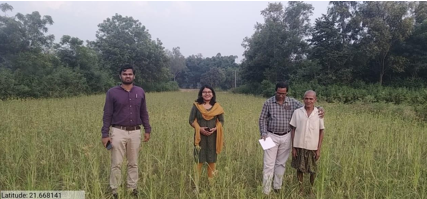 Other farmers in Tavasarua are closely observing Janardhan’s progress with millet cultivation. The village is excited about the potential of millets which will provide a more sustainable and reliable source of income. Janardhan’s journey into millet cultivation represents a promising new chapter for Tavasarua. While the millet crops are not yet matured, the shift towards more resilient and water-efficient farming practices is a step in the right direction. The community’s confidence and willingness to adapt to new agricultural methods highlight the potential for a brighter and more sustainable future for the village. “I am thankful to the Odisha Millets Mission and CYSD for inspiring me to cultivate millets and providing ample technical knowhow to this effect”, said Janardhan with full of cheerfulness.
Other farmers in Tavasarua are closely observing Janardhan’s progress with millet cultivation. The village is excited about the potential of millets which will provide a more sustainable and reliable source of income. Janardhan’s journey into millet cultivation represents a promising new chapter for Tavasarua. While the millet crops are not yet matured, the shift towards more resilient and water-efficient farming practices is a step in the right direction. The community’s confidence and willingness to adapt to new agricultural methods highlight the potential for a brighter and more sustainable future for the village. “I am thankful to the Odisha Millets Mission and CYSD for inspiring me to cultivate millets and providing ample technical knowhow to this effect”, said Janardhan with full of cheerfulness.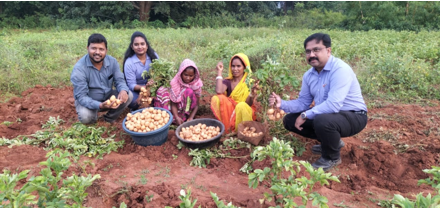
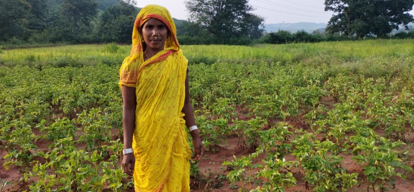 After getting involved in a village-level community mobilization meeting organized by CYSD, Kamala decided to take up the challenge of cultivating monsoon potato in her sloppy land. Although it was her first attempt, the guidance provided by the CYSD expert team increased her apprehensions.
After getting involved in a village-level community mobilization meeting organized by CYSD, Kamala decided to take up the challenge of cultivating monsoon potato in her sloppy land. Although it was her first attempt, the guidance provided by the CYSD expert team increased her apprehensions.
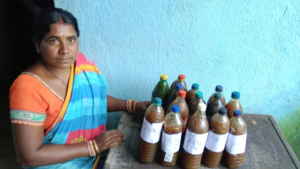 When Damayanti was asked about the results of bio-pesticide use instead of chemical pesticides, she replied that application of bio-pesticide has effectively controlled pests without damaging the soil and saved my input cost by 50%. This indicates the significant financial benefits of such techniques.
When Damayanti was asked about the results of bio-pesticide use instead of chemical pesticides, she replied that application of bio-pesticide has effectively controlled pests without damaging the soil and saved my input cost by 50%. This indicates the significant financial benefits of such techniques.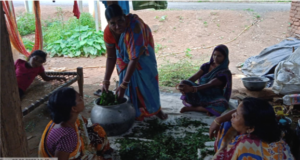 On realization of the actual value of this product, Demayanti eagerly wanted to know more about the product and the process of preparation and sought the technical guidance of Purnima, a master trainer in NPM. Knowing Damayanti’s interest in NPM, Purnima offered her training. Last year, Damayanti prepared 200 Ltr. Agneyastra for application in her own land and sold the surplus products.
On realization of the actual value of this product, Demayanti eagerly wanted to know more about the product and the process of preparation and sought the technical guidance of Purnima, a master trainer in NPM. Knowing Damayanti’s interest in NPM, Purnima offered her training. Last year, Damayanti prepared 200 Ltr. Agneyastra for application in her own land and sold the surplus products.